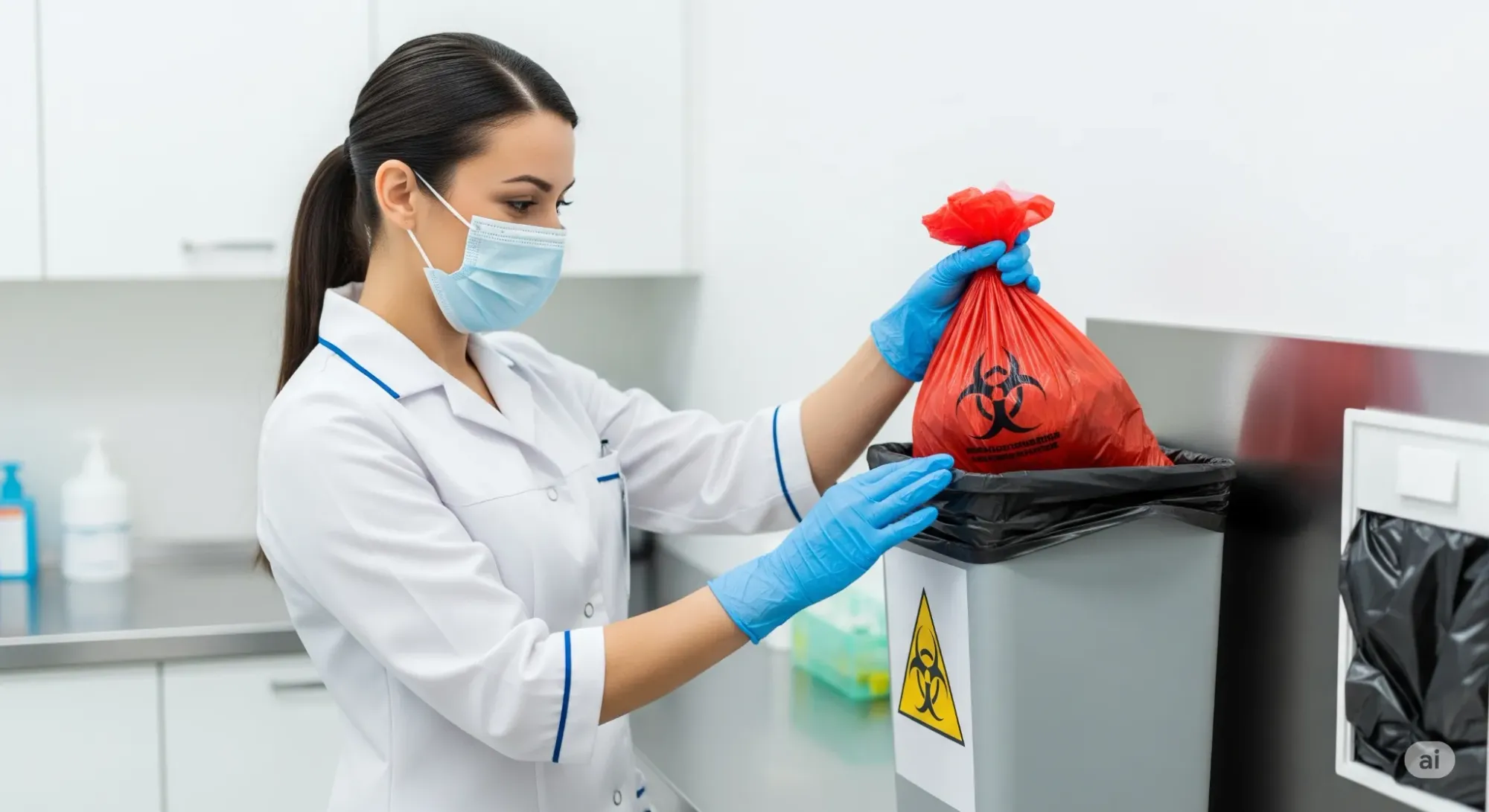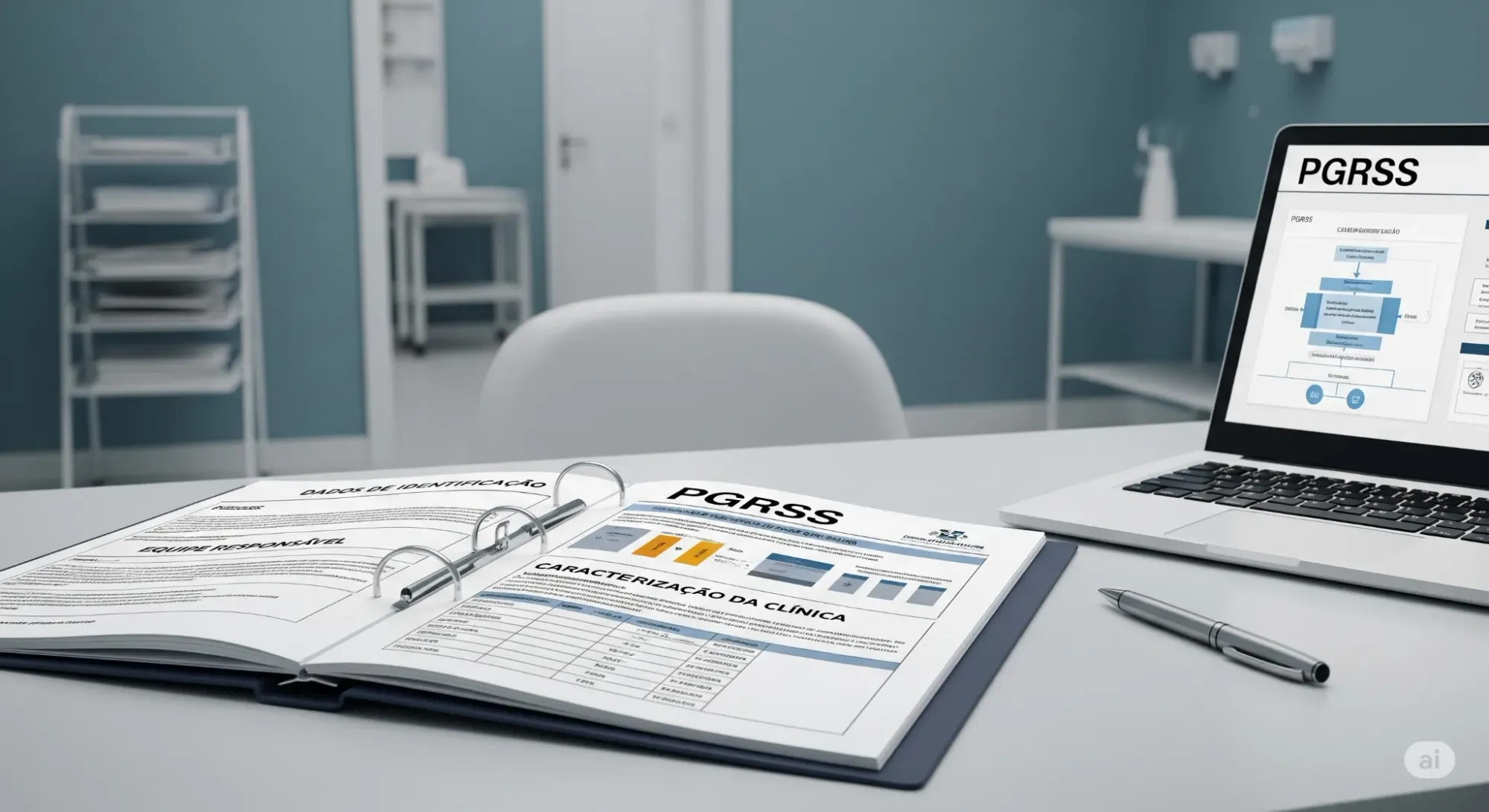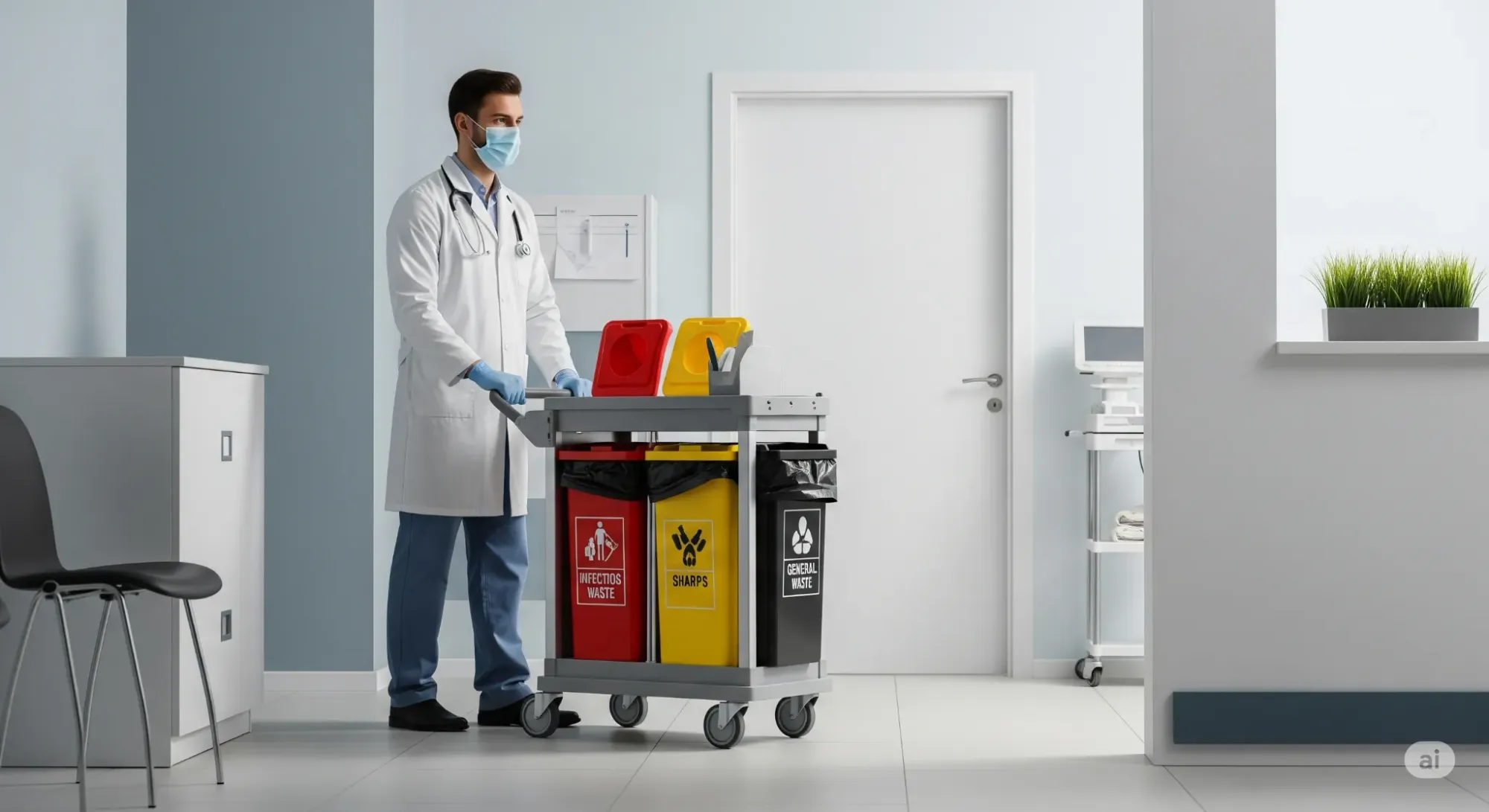
The daily routine of a health clinic goes far beyond patient care. Every day, various types of waste are generated in these environments, many of which require special treatment and disposal to avoid compromising public health and the environment. Correctly managing this waste isn't just a matter of environmental responsibility, but also a legal obligation that directly impacts the credibility and safety of the services provided.
That's why clinics, doctor's offices, and other healthcare establishments must develop a Healthcare Waste Management Plan (PGRSS). This technical document is essential to ensure that all waste is handled appropriately, from generation to final disposal. In this article, we'll discuss how to create an efficient PGRSS for your clinic.
Before we continue, we need to ask: Are you already familiar with Ninsaúde Clinic? Ninsaúde Clinic is a medical software with an agile and complete schedule, electronic medical records with legal validity, teleconsultation, financial control and much more. Schedule a demonstration or try Ninsaúde Clinic right now!

What is a PGRSS and Why Is It Mandatory?
A PGRSS is a document that describes the set of management procedures for waste generated in healthcare services. It must follow the principles of waste non-generation and minimization, always aiming to protect public health, worker safety, and environmental preservation. The development and implementation of a PGRSS are regulated by CONAMA resolutions nº 283/01, CONAMA nº 358/05, ANVISA RDC 306/04, and ABNT standards.
All institutions that perform activities related to human or animal health are obligated to develop a PGRSS. This includes medical clinics, dental offices, veterinary clinics, pharmacies, tattoo studios, morgues, among others.

Initial Diagnosis: Understanding Your Clinic's Waste
Before you start developing your PGRSS, it's crucial to conduct a detailed diagnosis of the waste generated at your clinic. Healthcare service waste is classified into five groups:
- Group A: Waste with potential presence of biological agents (e.g., materials contaminated with blood).
- Group B: Chemical waste (e.g., expired medications and cleaning products).
- Group C: Radioactive waste.
- Group D: Common waste, similar to household waste.
- Group E: Sharps (needles, scalpels, ampoules).
This assessment allows for proper handling planning for each type of waste, optimizing processes and avoiding risks.
Basic Structure of a PGRSS
A good PGRSS must contain a series of mandatory items that ensure clarity, traceability, and effectiveness in waste management. Below, we highlight the main topics that should be included:
1. Healthcare Service Identification Data
Complete information about the clinic, such as corporate name, tax ID (CNPJ), address, type and nature of the establishment, as well as the data of the technical and legal responsible party.
2. PGRSS Responsible Team
A technical manager for the plan should be appointed, including their qualifications, contacts, and, if possible, attaching nomination documents for the team responsible for waste management.
3. Clinic Characterization
At this point, the plan should describe:
- Type of services provided.
- Clinic size (small, medium, or large).
- Operating hours.
- Number of monthly appointments.
- Number of employees.
- Medical specialties.
- Team organizational chart.
- Information on sanitation, water supply, and sewage.
- Sanitary permit and environmental license, if applicable.

4. Waste Management - The Heart of the PGRSS
This is the most detailed item of the PGRSS, describing the operational procedures for each type of waste generated in the clinic. For each phase of management, it is essential to provide:
- Quantity Generated: Estimating the daily or weekly production of each waste type is crucial for planning, sizing containers, and determining collection frequency.
- Segregation and Packaging Procedures: Segregation should occur at the point of generation, immediately after use. Each waste type must be discarded in a specific, properly identified container with the appropriate risk symbol. For example, biological waste (Group A) in opaque white bags, and sharps collectors (Group E) in rigid, unbreakable containers, both with the appropriate risk symbol. Chemical waste (Group B) requires containers compatible with its composition, while common waste (Group D) goes into black or blue bags.
- Identification and Internal Storage: All containers must be clearly identified with the waste type and its risk symbol. Internal storage should be temporary, in a safe, ventilated area, restricted to authorized personnel, and away from heat sources.
- Internal and External Transportation:
- Internal transport is carried out by trained employees, using specific, sanitized, and identified carts, following safe routes to avoid contamination.
- External transport must be performed by specialized and licensed companies, using appropriate vehicles and following ANTT regulations for the transport of dangerous goods. The collection frequency must be compatible with the volume generated by the clinic.
- Collection Frequency: Defining the periodicity of internal and external collection ensures that there's no excessive accumulation, minimizing risks.
- Treatment and Final Disposal: Waste must be sent for treatment and disposal appropriate to its classification. Biological waste and sharps (Groups A and E) are generally subjected to autoclaving or incineration before landfilling. Chemical waste (Group B) requires specific physicochemical treatments or industrial landfills, and common waste (Group D) goes to selective collection or conventional sanitary landfills.
- Pest Control, Cleaning, and Sanitization Measures: It is crucial to maintain a pest control plan in waste storage areas, along with a routine of cleaning and disinfection of trash cans, drums, and carts.
- Safety and Prevention Measures for Workers: The PGRSS must detail the mandatory Personal Protective Equipment (PPE) for each stage of handling (gloves, masks, glasses, etc.) and biosafety protocols, including procedures in case of accidents.

Here, using software like Ninsaúde Clinic can significantly facilitate the control and recording of these steps. The system allows you to document waste disposal, generate reports, and organize contracts with third-party collection providers.
5. Team Training
Continuous training for employees is a legal requirement. The plan must present:
- Training plan (topics covered, dates, hours).
- Records of participants and instructors.
- Training frequency.
- Specific program for the cleaning and sanitization team.
Team qualification is fundamental to ensure correct protocol compliance and the safety of everyone involved.
6. Attached Documents
It is essential to attach documents to the PGRSS that prove the practices described. Among the main ones are:
- Contracts with collection, transport, treatment, and disposal companies.
- Pest control contract.
- Environmental licenses of third-party providers.
- Proof of donation or sale of recyclables.
- ART (Technical Responsibility Annotation).
- Document appointing the PGRSS team.
- Records of completed training sessions.
These documents reinforce the clinic's transparency and legal compliance.
Implementing the PGRSS in the Clinic's Routine
After developing the plan, it needs to be put into practice. This requires:
- Team engagement, especially from professionals directly involved in waste handling.
- Periodic monitoring of compliance with the described procedures.
- Constant updating of the plan whenever there are changes in routine, infrastructure, or the type of waste generated.
The adoption of digital tools can be a great ally in this process. Ninsaúde Clinic, for example, offers functionalities that assist in operational management, such as contract control and traceability of internal processes, directly contributing to PGRSS compliance.

Best Practices for Keeping the Plan Updated
- Conduct internal audits every six months to verify plan compliance.
- Review the PGRSS annually or whenever there are relevant changes in the clinic.
- Maintain regular contact with third-party companies for license and proof updates.
- Encourage a culture of sustainability among employees.
Benefits of Effective Waste Management
In addition to fulfilling legal requirements, a well-implemented PGRSS brings several advantages to the clinic:
- Reduced risks of contamination and accidents.
- Improved institutional image and patient trust.
- Cost optimization for materials and processes.
- Greater control over the waste chain.
- Contribution to environmental preservation.
These benefits are only achieved with a solid, well-structured plan effectively integrated into the team's routine.

Waste Management as Part of the Clinic's Strategy
Correctly managing healthcare waste is an obligation that goes beyond the legal sphere: it's an ethical and strategic stance. With a well-developed and updated PGRSS, your clinic demonstrates a commitment to collective health, professional safety, and environmental sustainability.
Using systems that support this management, such as Ninsaúde Clinic, strengthens compliance with legal guidelines and makes processes more organized and secure. By integrating the plan into the clinic's strategy, managers ensure not only compliance but also operational efficiency and social responsibility.
Liked the information? Then prepare for a continuous journey of knowledge by following our blog. Are you a health professional and not yet familiar with the benefits of Ninsaúde Clinic? Stay ahead, optimize your processes, and elevate excellence in patient care!

